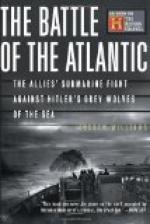There was little to be done after the ropes had been coiled away, and we were fairly out into the broader reaches of the Bay. The wind held steady, requiring no shifting of canvas, so Sam, having dispatched the negro below to prepare lunch, and stationed Carr forward as lookout, called me aft to the wheel. He was a rather pleasant-faced fellow, yellow as saffron, with rings in his ears, and a wide mouth perpetually grinning.
“Massa Fairfax he say you real sailorman,” he began, looking me over carefully, with a nod of his head toward the group at the rail. “Dat so?”
“Yes; I have been a number of years at sea.”
“Dat what he say; dat he done bought yer fer dat reason mostly. Ah reckon den ye kin steer dis boat?”
“I certainly can.”
“So? Den Ah’s sure goin’ fer ter let yer try right now. Yer take hol’, while Ah stand by a bit.”
I took his place, grasping the spokes firmly, and he stood aside, watching every movement closely, as I held the speeding sloop steadily up to the wind, the spray pouring in over the dipping rail forward. The grin on his lips broadened.
“What is the course?” I asked curiously.
“’Cross ter dat point yonder—see, whar de lone tree stan’s; we done ’round dat ‘bout tree hunder’ yards out, an’ then go straight ’way north.”
“You use no chart?”
He burst into a guffaw, as though the question was a rare joke.
“No, sah; I nebber done saw one.”
“But surely you must steer by compass?”
“Dar is a little one somewhar on board, and Ah done ain’t seed it fer mor ’n a yare, Ah reckon. ’Tain’t no use enyhow. Whut we steer by is landmarks. Ah sure does know de Chesapeake. Yer ever bin up de Bay?”




